Welcome to Technology Moment, your ultimate hub for all things tech! Today, we’re diving into the art of making your iPhone 12 truly yours. From sleek home screen designs to customized ringtones, your iPhone is a canvas waiting for your personal touch. In this guide, we’ll walk you through every step of the customization process—making your device as unique as you are. Whether you’re a seasoned Apple enthusiast or a first-time iPhone user, get ready to unlock a world of possibilities and transform your iPhone 12 into a personalized powerhouse!
Owning an iPhone 12 is like holding a piece of cutting-edge technology that doubles as a canvas for your personal expression. While the device is packed with incredible features, its true potential shines when you tailor it to fit your personality and lifestyle. Customizing your iPhone 12 goes beyond aesthetics—it’s about creating a user experience that feels intuitive, functional, and uniquely yours.
Why does customization matter? Think about it: your phone is something you interact with dozens, if not hundreds, of times a day. It’s not just a communication tool—it’s your calendar, your photo album, your entertainment hub, and even your fitness tracker. Personalizing it can make those daily interactions smoother, more enjoyable, and perfectly aligned with your needs.
Customization also empowers you to prioritize what matters most. Whether it’s organizing your home screen to keep work and play separate, fine-tuning your notifications to avoid distractions, or setting up Siri shortcuts for quicker access to your favorite apps, the possibilities are endless.
In this guide, we’ll walk you through step-by-step instructions to unlock the full potential of your iPhone 12. From creating a home screen that sparks joy every time you see it to customizing privacy settings for enhanced security, you’ll discover how to make your device truly feel like yours. Let’s dive in and turn your iPhone 12 into a reflection of you!
Understanding Your iPhone 12’s Customization Options
The Apple iPhone 12 is not just a sleek device with cutting-edge technology—it’s a canvas for your personality. Apple has designed the iPhone 12 to offer a wide range of customization options, allowing users to tailor their device to fit their unique preferences. Let’s dive into what makes the iPhone 12 a standout for personalization and how its features enable a truly customized experience.
Overview of Features Designed for Personalization
The iPhone 12 is built on Apple’s robust iOS operating system, which has evolved over the years to provide users with extensive flexibility. Some of the standout features include:
- Home Screen Customization:
With iOS 14 and beyond, Apple introduced widgets and the ability to hide or rearrange pages on the home screen. This feature empowers you to design a functional and visually appealing layout that suits your style. - Dynamic Wallpapers and Themes:
Apple offers a variety of built-in wallpapers, from still images to dynamic and live options. Additionally, the App Store hosts apps that allow users to implement unique themes and matching app icons. - Control Center Options:
The Control Center can be fully customized to include shortcuts to the tools you use most often, such as screen recording, flashlight, or specific smart home controls. - Focus Modes for a Tailored Workflow:
The introduction of Focus modes lets you configure different notification settings for work, personal time, or relaxation, ensuring that your phone adapts to your current priorities.
What Makes the iPhone 12 Unique for Customization?
The iPhone 12 isn’t just another smartphone; it’s part of a carefully integrated Apple ecosystem. This integration offers unique advantages for customization:
- Powerful A14 Bionic Chip:
The iPhone 12’s A14 chip ensures that even resource-intensive customization features, like live wallpapers or third-party widget apps, run seamlessly. - Vibrant Super Retina XDR Display:
The edge-to-edge OLED screen enhances every visual customization you apply, whether it’s a vivid wallpaper or detailed app icons. - Support for Third-Party Apps:
Apple has opened its platform to allow third-party developers to create apps for widgets, themes, and icon packs. These apps expand the possibilities for making your device truly your own. - Accessibility Enhancements:
Apple’s accessibility features, like AssistiveTouch and VoiceOver, ensure that users with varying needs can also enjoy a customized and user-friendly experience.
Why Customize?
- Reflect Your Personality:
Your iPhone 12 is something you interact with every day. Customization makes it feel like an extension of you. - Improve Productivity:
Organizing apps, widgets, and Focus modes based on your workflow can make your daily tasks more efficient. - Enhance Usability:
Tailoring settings like haptics, font sizes, and Control Center tools ensures that your phone works exactly how you need it to.
Table of Contents
Setting Up Your iPhone 12
Customizing your iPhone 12 begins with a solid setup. The initial configuration ensures your device is ready for personalization while optimizing its functionality.
Initial Setup Essentials
When you power on your iPhone 12 for the first time, you’ll be greeted by the “Hello” screen. Here’s how to proceed:
- Choose Your Language and Region:
Select your preferred language and region to set up the device’s basic settings, including the keyboard layout and date format. - Connect to Wi-Fi:
Join a Wi-Fi network to access online services during setup. This step is crucial for downloading apps, signing in to iCloud, and enabling system updates. - Insert a SIM Card:
If you’re using a physical SIM card, insert it into the SIM tray. Alternatively, set up an eSIM if supported by your carrier. - Create a Passcode:
Add an additional layer of security by setting a six-digit passcode. This code is required for unlocking your phone, enabling Apple Pay, and more.
Syncing Your Apple ID and Enabling Key Features
Your Apple ID is the gateway to syncing your Apple ecosystem and accessing personalized services.
- Sign In with Your Apple ID:
Enter your Apple ID and password. This account is crucial for downloading apps, using iCloud, and syncing across devices. - Restore from Backup (Optional):
If you’re upgrading from an older device, choose to restore your apps, data, and settings from iCloud or iTunes. This step saves time and retains your preferences. - Set Up iCloud:
Enable iCloud to back up photos, contacts, messages, and other important data. This ensures seamless access across all your Apple devices. - Enable Location Services:
Decide whether to enable location tracking for apps like Maps, Weather, and Find My iPhone. You can customize location settings later for privacy. - Configure Siri and Voice Recognition:
Follow the prompts to set up Siri. Speak a few sample phrases so Siri recognizes your voice for hands-free assistance. - Activate Key Features:
- iMessage and FaceTime: Sign in to these services for seamless communication.
- Apple Pay: Set up payment options for quick and secure transactions.
- App Store and Automatic Downloads: Enable automatic app updates for convenience.
Tips for a Smooth Setup
- Charge Your Device Fully:
Ensure your iPhone 12 is adequately charged before starting the setup. This avoids interruptions mid-process. - Prepare Backup Credentials:
Keep your Apple ID, Wi-Fi passwords, and carrier information handy to streamline the setup. - Update to the Latest iOS Version:
Check for software updates after setup.
Customizing Your Home Screen
The home screen of your iPhone 12 is more than just a place to access apps—it’s your digital canvas. With Apple’s iOS offering numerous customization features, you can tailor your home screen to reflect your style and improve your daily workflow.
Choosing a Wallpaper That Reflects Your Style
- Navigate to Settings: Open the Settings app and tap on Wallpaper.
- Select a New Wallpaper: Choose from Apple’s dynamic, still, or live wallpapers, or use a favorite photo from your gallery.
- Set and Preview: Adjust the image placement and preview how it looks on both the lock and home screens. You can opt to set the wallpaper for either or both screens.
Want something more unique? Download third-party apps like Zedge or create your own wallpapers using apps like Canva.
Rearranging and Organizing Apps
Say goodbye to cluttered screens and hello to a streamlined interface:
- Enter Jiggle Mode: Long-press on any app icon until all icons start to wiggle.
- Move Apps: Drag and drop apps to arrange them in an order that makes sense to you. You might group similar apps, like social media or productivity tools, together.
- Delete or Hide Apps: Tap the minus (-) icon to remove unnecessary apps or send them to the App Library to declutter your screen without uninstalling them.
Creating Widgets for a Personalized Touch
Widgets bring essential information to your fingertips and can make your home screen visually appealing. Here’s how to use them:
- Access the Widget Gallery: Long-press on an empty area of your home screen and tap the plus (+) icon in the top left corner.
- Choose a Widget: Browse through available widgets for apps like Weather, Calendar, Photos, or third-party apps.
- Select Size and Position: Each widget offers multiple sizes (small, medium, large). Pick the one that suits your layout and drag it to your desired spot.
For a more aesthetic look, apps like Widgetsmith or Color Widgets allow you to create custom widgets with unique fonts, colors, and designs.
Grouping Apps into Folders
Folders keep your screen tidy while ensuring easy access to your apps:
- Create a Folder: Drag one app over another to automatically create a folder.
- Rename Your Folder: Tap on the folder name to customize it (e.g., “Work,” “Games,” or “Fitness”).
- Add More Apps: Drag additional apps into the folder as needed.
Using the App Library for a Cleaner Look
- Access the App Library: Swipe left until you reach the last screen of your home pages.
- Customize Pages: In Jiggle Mode, tap the dots at the bottom of the screen to hide entire pages of apps while still accessing them from the App Library.
Experimenting with Custom App Icons
If you’re into aesthetics, custom app icons can transform your home screen:
- Download Shortcuts App: Use Apple’s Shortcuts app to create a custom shortcut for any app.
- Set Custom Icons: Choose a new image for the icon (download packs from websites or design your own).
- Replace Original Icons: Replace the original app icon with your custom one and move the original app to the App Library for a polished look.
Personalizing Notifications
Notifications are the lifeline of your iPhone 12, keeping you updated about messages, reminders, and app activities. However, without proper personalization, they can quickly become overwhelming. By tailoring your notification settings, you can ensure you only get the alerts that matter to you. Here’s how you can take control:
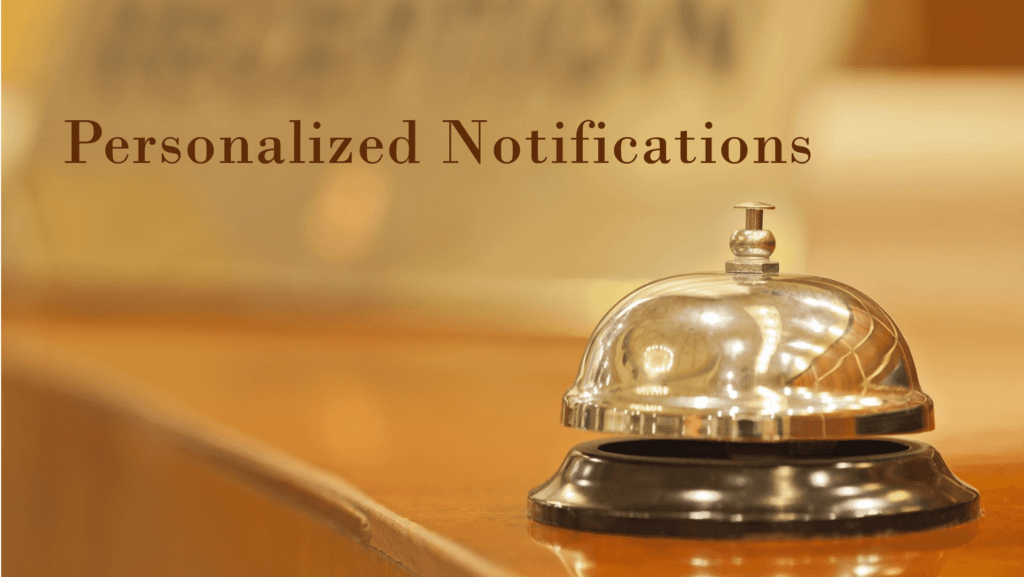
Setting Up Notification Preferences for Specific Apps
Each app on your iPhone 12 has its unique notification settings. Customizing these allows you to prioritize important alerts while silencing the unnecessary ones. Here’s a step-by-step guide:
- Navigate to Notification Settings:
- Open the Settings app on your iPhone.
- Tap Notifications.
- Choose an App to Customize:
- Scroll through the list of apps and select the one you want to modify. For example, choose Messages for SMS alerts or Mail for email notifications.
- Adjust the Notification Style:
- You’ll see options like Lock Screen, Notification Center, and Banners.
- Enable or disable these options based on where you want the notification to appear.
- Set Alert Sounds:
- Customize the sound for each app. For example, assign a distinct tone to your messaging app to differentiate it from email alerts.
- Enable or Disable Badges:
- Badges are the red dots with numbers that appear on app icons. Turn them on for essential apps like Messages or off for non-urgent ones like Games.
- Toggle Critical Alerts:
- Some apps, like health-related apps, offer Critical Alerts that bypass silent mode. Enable this feature if necessary.
Enabling and Customizing Focus Modes
Focus Modes are a game-changer for managing notifications during specific activities. Whether you’re working, sleeping, or relaxing, Focus helps you filter notifications to minimize distractions.
- Access Focus Modes:
- Go to Settings > Focus.
- Set Up a Focus Mode:
- Tap + to create a new Focus or modify existing ones like Do Not Disturb, Work, or Sleep.
- Choose People and Apps to Allow:
- Add important contacts and essential apps that can send you notifications during that mode. For instance, allow only family members and work emails during Work Focus.
- Schedule Focus Modes:
- Set specific times or locations for Focus modes to activate automatically. For example, Work Focus can turn on at 9 AM and off at 5 PM.
- Customize Home and Lock Screen Behavior:
- Hide notification badges or limit app visibility on the Home Screen to stay focused.
Benefits of Personalizing Notifications
- Enhanced Productivity: Filter out distractions during work or study hours.
- Improved Focus: Tailor alerts to match your immediate priorities.
- Reduced Stress: Eliminate the constant buzz of unnecessary notifications.
- Seamless Experience: Enjoy a clutter-free Lock Screen and Notification Center.
Pro Tip: Leverage Notification Summary
If you’re bombarded with notifications from multiple apps, use the Scheduled Summary feature:
- Settings > Notifications > Scheduled
- Select apps to include and schedule times for a consolidated notification update.
Customizing Sounds and Haptics
Your iPhone 12 offers a rich variety of sound and haptic feedback customization options to make your device feel truly yours. This step ensures that notifications, calls, and interactions not only grab your attention but also align with your personal preferences. Let’s dive into how you can fine-tune these settings.
Choosing Your Ringtone and Text Tone
The first step in personalizing sounds is selecting a ringtone and text tone that resonates with your style. Here’s how you can do it:
- Open the Settings App: Navigate to Settings > Sounds & Haptics.
- Ringtone Selection: Tap on Ringtone, and you’ll see a list of pre-installed tones. You can preview each by tapping on them.
- Tip: If none of the default options appeal to you, consider purchasing unique ringtones from the iTunes Store or creating custom tones using apps like GarageBand.
- Text Tone: Similarly, select Text Tone to assign a distinctive sound for incoming messages.
These simple changes allow you to identify notifications without looking at your screen.
Customizing Notification Sounds for Specific Apps
Not all apps need to notify you with the same sound. Tailor notifications by app to better manage your alerts:
- Go to Settings > Notifications.
- Choose the app you want to customize.
- Adjust its alert sound by selecting Sounds under the app’s notification settings.
- For example, assign a calming tone for social media apps and a more urgent sound for emails.
Adjusting System Sounds
System sounds like keyboard clicks, lock sounds, and charging tones can also be customized or disabled:
- Go to Settings > Sounds & Haptics.
- Scroll down to Keyboard Clicks and Lock Sound and toggle them on or off depending on your preference.
- Pro Tip: Disabling these sounds can create a more tranquil experience, especially in quiet environments.
Fine-Tuning Haptic Feedback
Haptic feedback refers to the subtle vibrations your iPhone makes during interactions, such as typing or receiving notifications.
- Navigate to Haptic Settings: Go to Settings > Sounds & Haptics.
- Customize Vibration Patterns: Under sections like Ringtone or Text Tone, select Vibration and choose from a variety of patterns like “Heartbeat” or “Rapid.”
- You can even create a custom vibration pattern by tapping on Create New Vibration and recording your taps.
Setting Vibration Preferences for Silent Mode
If you rely on vibrations when your phone is in silent mode, ensuring the haptic settings are optimized is crucial:
- Go to Settings > Sounds & Haptics.
- Under the Vibrate section, enable or disable Vibrate on Ring and Vibrate on Silent based on your preference.
Creating a Balanced Experience
Your iPhone 12 allows you to adjust the balance between sounds and haptics for various scenarios:
- Use Do Not Disturb or Focus Modes to silence or reduce interruptions without missing critical alerts.
- Combine subtle sound tones with light haptic feedback for environments where discretion is key, such as meetings or libraries.
Optimizing Accessibility Features
Customizing the accessibility features of your iPhone 12 is essential to ensure a user experience tailored to your specific needs and preferences. Apple has made significant strides in making its devices more inclusive, offering a plethora of tools designed to cater to individuals with various abilities. Here’s how you can optimize these features to make your iPhone 12 truly your own:
Adjusting Display Settings for Better Visibility
- Enable Display & Text Size Adjustments:
Settings > Accessibility > Display & Text Size. Here, you can modify text size, apply bold text, or increase contrast to make on-screen elements easier to read.- Tip: Use the Color Filters option to accommodate color blindness or other visual preferences.
- Reduce Motion for Simplified Visuals:
For those sensitive to screen animations, enabling Reduce Motion minimizes the parallax effect and transitions.- How to Enable: Go to Settings > Accessibility > Motion and toggle on Reduce Motion.
- Dark Mode and Night Shift:
Dark Mode reduces eye strain in low-light conditions, while Night Shift adjusts the display’s color temperature to warmer tones for better nighttime viewing.- Activate these settings via Settings > Display & Brightness.
Enabling Voice Commands and Shortcuts
- Voice Control for Hands-Free Use:
With Voice Control, you can operate your iPhone entirely through spoken commands.- How to Enable: Head to Settings > Accessibility > Voice Control, and set up your personalized commands.
- Key Benefits: Dictate messages, open apps, and perform actions without touching the screen.
- Siri and Accessibility Shortcuts:
For example, you can program Siri to adjust brightness, enable certain features, or provide quick answers.- Use Accessibility Shortcut (activated by triple-clicking the side button) to toggle your most-used features, like VoiceOver or Magnifier.
Hearing Accessibility Features
- Customize Audio Settings:
Whether you use AirPods or another hearing aid, your iPhone 12 allows for detailed sound adjustments.- Enable Hearing Aid Compatibility via Settings > Accessibility > Hearing Devices.
- Captions and Subtitles:
Turn on Closed Captions + SDH (Subtitles for the Deaf and Hard of Hearing) for videos to ensure you never miss out on important dialogue.- Activate it via Settings > Accessibility > Subtitles & Captioning.
Mobility and Touch Assistance
- AssistiveTouch for Custom Controls:
AssistiveTouch creates an on-screen menu that provides shortcuts for gestures like pinching, swiping, or multi-tapping.- Setup: Go to Settings > Accessibility > Touch > AssistiveTouch and customize the menu to your liking.
- Back Tap Feature:
This nifty feature lets you assign actions to double-tap or triple-tap gestures on the back of your phone.- How to Enable: Visit Settings > Accessibility > Touch > Back Tap and select the desired actions, such as opening an app or taking a screenshot.
Additional Accessibility Features to Explore
- Magnifier: Enable it via Settings > Accessibility > Magnifier.
- Spoken Content: The Speak Screen and Speak Selection features let your iPhone read text aloud, perfect for multitasking or assisting those with reading difficulties.
- Guided Access: Limit your iPhone to a single app to maintain focus, ideal for children or specific tasks. Activate it via Settings > Accessibility > Guided Access.
Tailoring Privacy Settings
Privacy is one of the core principles Apple prioritizes in its devices, including the iPhone 12. Customizing your privacy settings ensures that you’re in control of what information your phone shares and with whom. Here’s how you can fine-tune those settings:
Managing App Permissions
Apps on your iPhone often request access to various features like your camera, microphone, contacts, photos, and location. While granting these permissions is often necessary for functionality, it’s also important to review and manage them regularly to maintain your privacy. To tailor app permissions:
- Go to Settings > Privacy
- Here, you will find a list of all the permissions (Camera, Contacts, Microphone, etc.).
- Tap on each category to see which apps have requested access.
- You can enable or disable permission for each app by toggling the switch next to its name.
For example, you may not want certain apps accessing your location or contacts. By restricting these permissions, you ensure that your private data is protected.
Customizing Location and Tracking Options
Apple allows you to customize location settings, giving you full control over how and when your device tracks your whereabouts.
- For apps that require location tracking, you can also choose to allow access only while using the app or disable it completely.
- Go to Settings > Privacy > Tracking to control which apps are allowed to track your activity across other apps and websites for advertising purposes. You can toggle the “Allow Apps to Request to Track” setting off to stop apps from asking for tracking permission altogether.
Exploring Themes and Aesthetic Enhancements
Customizing the aesthetic of your iPhone 12 can enhance its visual appeal and make your device feel more personalized. From changing the appearance of your apps to adjusting your display settings, there are many ways to create a unique and stylish interface.
Using Third-Party Apps for Themes
Apple allows a degree of customization for your device, but for a truly personalized look, third-party apps are your best friend. These apps enable you to tweak the look and feel of your iPhone’s interface:
- Custom Icons: Apps like “Widgetsmith,” “Icon Themer,” and “Shortcuts” allow you to create or download custom app icons. You can change the icons to match your personal style or even use custom images for an added touch.
- Themes: Some apps offer pre-made themes that adjust the color scheme and layout of your apps and widgets, giving your home screen a cohesive look. These apps typically work by changing the icons, wallpapers, and widgets to match a particular aesthetic (e.g., minimalist, dark mode, vintage).
Matching App Icons with Your Overall Aesthetic
Beyond just wallpapers and widgets, the app icons on your iPhone can also be customized to match a specific aesthetic or color palette. By organizing apps with matching icons, you can create a smooth, harmonious visual experience.
- You can choose from pre-designed icon packs or create your own through the “Shortcuts” app.
- If you want to achieve a cohesive, sleek design, go for monochrome or pastel-colored icons that work well together.
Using Wallpapers for a Personal Touch
One of the easiest ways to express your style on your iPhone 12 is by selecting a wallpaper that matches your personality. You can customize both the lock screen and home screen to reflect your preferences.
- Dynamic Wallpapers: Apple’s iPhone 12 supports dynamic wallpapers, which are animated and change based on your device’s movements. These can make your phone feel alive and constantly evolving.
- Live Wallpapers: You can also use live wallpapers, which respond to touch or motion, offering a playful and interactive visual experience.
In addition to the built-in wallpaper options, you can also upload personal images, including photographs, artwork, or custom designs, to further personalize your device.
Adjusting the Display Settings for a Unique Look
Apple offers several display settings that can be customized to match your aesthetic preferences:
- Dark Mode: Enable dark mode for a sleek, modern look while reducing eye strain. Go to Settings > Display & Brightness > Appearance, and choose Dark.
- True Tone and Night Shift: These features adjust the display’s color balance and brightness based on the environment or time of day, creating a more comfortable viewing experience. True Tone ensures colors appear natural, while Night Shift reduces blue light to make using your phone at night easier on the eyes.
Customizing Your Control Center
The Control Center on the iPhone 12 is a quick-access feature that allows you to control various settings and features without having to dive deep into the Settings app. It’s like your digital shortcut bar, providing faster access to the functions you use the most. Customizing this feature can save you time and make your device more intuitive to use.
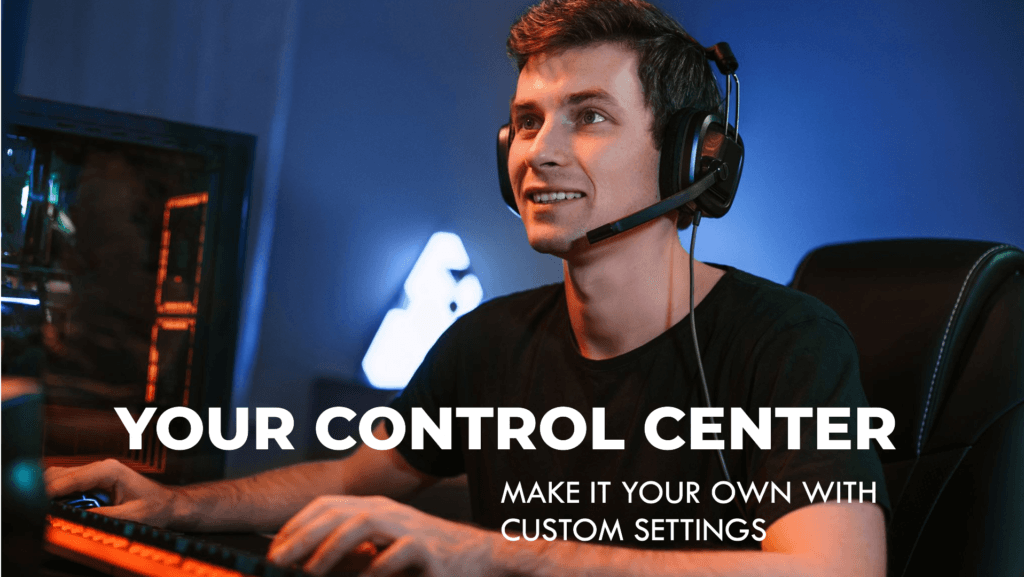
Adding and Removing Controls
To start customizing your Control Center, follow these simple steps:
- Open the Settings > Control Center.
- You will see two sections here:
- Included Controls: These are the controls currently available in your Control Center.
- More Controls: These are additional options that you can add to your Control Center.
- To add a control, simply tap the green + button next to the feature you want to include. For instance, if you frequently use the Screen Recording feature, you can add it here.
- To remove a control, tap the red – button next to the feature you no longer want in your Control Center.
Some popular controls that users typically add include:
- Screen Recording: Quickly record your screen when needed.
- Low Power Mode: Toggle this on and off to save battery life.
- Alarm: Set or adjust alarms without opening the Clock app.
- Apple TV Remote: For controlling your Apple TV right from your iPhone.
Organizing Quick-Access Tools
Once you’ve added your preferred controls, you can organize them in the Control Center. This way, your most-used features are easy to access, and you don’t have to waste time scrolling through options. Unfortunately, iOS doesn’t allow for full customization of the order of these controls (aside from rearranging the ones in the Included Controls section), but it’s still highly beneficial for quick access to key functions.
To rearrange, simply tap the three horizontal lines next to each control in the Included Controls list and drag them up or down.
Maximizing Battery Life with Custom Settings
iPhones, like the iPhone 12, are packed with advanced features that drain the battery if not properly managed. However, customizing certain settings can help you extend your battery life throughout the day. By tweaking these options, you can keep your device running for longer periods without having to constantly worry about charging.
Adjusting Brightness and Display Settings
The display on the iPhone 12 is one of the biggest battery drainers. While the screen is stunning, adjusting the display settings can help you save a significant amount of power. Here are some tips:
- Lower the Brightness:
- Alternatively, go to Settings > Display & Brightness, and you can manually adjust the brightness level.
- Enable Auto-Brightness:
- Auto-Brightness automatically adjusts your screen’s brightness based on the lighting conditions around you. To enable this, go to Settings > Accessibility > Display & Text Size and turn on Auto-Brightness.
- Use Dark Mode:
- Dark Mode reduces the energy consumption of your display by using darker colors. To turn on Dark Mode, go to Settings > Display & Brightness and select the Dark option. This not only saves battery life but also provides a visually pleasing experience, especially in low-light environments.
Using Low Power Mode Effectively
Low Power Mode is a great feature on the iPhone 12 that can extend your battery life when you’re running low on charge. It reduces background app activity, automatic downloads, visual effects, and other power-hungry processes.
To turn on Low Power Mode, go to Settings > Battery and toggle the switch for Low Power Mode. Alternatively, you can add Low Power Mode to the Control Center for quicker access. Keep in mind that while this mode helps conserve power, it might reduce the performance of some tasks like updating apps or fetching emails in the background.
Other Battery-Saving Tips
- Manage Background App Refresh:
- To manage this, go to Settings > General > Background App Refresh and either turn it off completely or limit it to Wi-Fi only.
- Turn off Location Services:
- GPS and location-based services are major battery drainers. To control this, go to Settings > Privacy > Location Services and either turn it off completely or customize which apps can access your location.
- Turn off Push Email:
- The default setting for your email account may push notifications for new messages constantly. To extend battery life, set your email to Fetch instead of Push by going to Settings > Mail > Accounts > Fetch New Data and selecting a less frequent fetch schedule.
- Disable Raise to Wake:
- The Raise to Wake feature activates your iPhone’s screen whenever you pick it up. While convenient, it can drain battery life. Turn it off by going to Settings > Display & Brightness and toggling off Raise to Wake.
Leveraging Siri for a Personalized Experience
Siri, Apple’s virtual assistant, has come a long way in terms of personalization. It’s not just about asking questions or setting reminders—it’s about tailoring Siri to better fit your needs and lifestyle. Here’s how you can leverage Siri for a truly personalized experience on your iPhone 12:
Customizing Siri’s Voice and Language
One of the first steps to making Siri feel more personal is adjusting its voice. Siri offers several voice options, including different accents and genders. On your iPhone 12, you can change Siri’s voice to sound more like you or match your preferences:
- Go to Settings > Siri & Search.
- Tap on Siri Voice.
- Choose between different Varieties (like American, British, Australian) and Genders.
This simple change makes Siri sound more familiar and accessible, making your interactions feel more personal.
Setting Up Siri Shortcuts for Everyday Tasks
By setting up these shortcuts, you can streamline tasks and make Siri work for you in a way that’s most helpful. Whether it’s turning on your favorite playlist, sending a message to a specific person, or creating a complex routine like adjusting the lighting in your home, Siri can do it all.
Here’s how to set it up:
- Open the Shortcuts app on your iPhone.
- Tap on Create Shortcut.
- Choose the action you want Siri to perform, such as launching an app, making a call, or sending a text.
- Assign a custom phrase for Siri to recognize, like “Good morning” to trigger a series of actions, such as turning on the lights or reading the news.
Enhancing Your Camera and Photo Gallery
The iPhone 12 comes with a powerful camera system, but beyond just taking great photos, you can customize and organize your photo gallery to get the most out of your images. Here are some ways to enhance both your camera settings and the way you organize your photos:
Customizing Camera Settings for Quality Shots
To ensure you get the best possible photos, it’s important to understand how to use and customize these settings:
- Night Mode: Night Mode automatically activates in low-light situations, but you can adjust the exposure time to get clearer images. Tap the Night Mode icon and slide the timer to extend the exposure for brighter photos in dim settings.
- Deep Fusion: This feature enhances detail in medium to low-light conditions, ensuring textures and details are sharp. While Deep Fusion works automatically, it can be helpful to adjust your composition and lighting to get the most out of this feature.
- Smart HDR: Smart HDR is great for capturing high-contrast scenes, automatically enhancing highlights and shadows. If you want more control over the results, try manually adjusting the exposure by tapping on the screen and sliding your finger up or down.
- Pro Camera Mode: Using third-party camera apps like Halide or ProCamera, you can access professional-grade features, such as adjusting ISO, shutter speed, and white balance for complete control over your shots.
Organizing Your Photo Albums Like a Pro
Your photo gallery is likely filled with hundreds or even thousands of photos. To keep everything organized and easily accessible, take advantage of the built-in album features on your iPhone 12. Here’s how:
- Create Custom Albums: In the Photos app, go to the Albums tab and tap the + in the top left corner. From there, you can create albums for different events, trips, or categories (e.g., family, travel, food).
- Use Smart Albums: The iPhone automatically categorizes your photos into People, Places, Favorites, and Recents. You can fine-tune these categories by tagging faces in photos, so the Photos app learns who the people are and organizes them for you.
- Search and Filter Photos: The Photos app features a powerful search function that uses machine learning to identify objects, scenes, and even text in your photos. This makes it easy to find pictures of specific places, events, or people without scrolling through your entire gallery.
- Favorite Your Best Shots: Tap the heart icon under a photo to mark it as a favorite. This helps you quickly access your best shots later.
- Use iCloud for Storage: iCloud allows you to store all your photos in the cloud, freeing up space on your device. You can also organize albums in iCloud and access them across all your Apple devices, ensuring your memories are always at your fingertips.
Exploring Fun Features
The iPhone 12 isn’t just about functionality and performance; it also offers plenty of fun features that allow you to add a personal, playful touch to your device. These features are designed to enhance your experience with engaging and creative tools that make your iPhone 12 stand out.
Setting Up Memojis and Animojis
One of the most enjoyable customization features on the iPhone 12 is the ability to create and use Memojis and Animojis. Memojis are customizable cartoon avatars that represent you, while Animojis are animated versions of various emoji characters, such as a monkey, dog, or alien, that mimic your facial expressions through the iPhone’s TrueDepth camera.
- Creating Memojis: To start, open the Messages app, create a new message, and tap the Animoji icon. Here, you can either choose a default Animoji or swipe to the Memoji tab to create your own.
- Using Animojis: Animojis are fun to use in FaceTime or Messages, where they replicate your facial movements, bringing a playful vibe to your conversations. You can also record short videos with your chosen Animoji, which adds a fun, expressive element to your messages.
Both Memojis and Animojis are integrated into many apps across the iPhone 12, such as FaceTime, iMessage, and even third-party apps that support iOS’s Animoji functionality. This adds a fun, personalized layer to your iPhone experience.
Using Live Wallpapers for a Dynamic Display
Live wallpapers are another exciting way to customize the look of your iPhone 12. Unlike static images, live wallpapers are animated backgrounds that come to life when you press firmly on the screen.
- Setting Up Live Wallpapers: To set up a live wallpaper, go to Settings > Wallpaper > Choose a New Wallpaper. From here, you can select one of Apple’s dynamic wallpapers or use a live photo you’ve taken. Simply tap on the live photo to see the animation in action.
- Creating Custom Live Wallpapers: If you want to use your own creative work, simply take a photo or video that captures motion, and set it as a live wallpaper. When you press and hold the screen, the image will animate, adding a dynamic touch to your device.
Live wallpapers give your iPhone 12 a unique and fun element. They turn the screen into an interactive experience that can be customized with your own creativity.
Troubleshooting Customization Issues
While customizing your iPhone 12 is a fun and rewarding experience, you might occasionally run into issues that can interrupt the process. If you encounter problems, don’t worry! Here are some common issues and solutions to help you troubleshoot customization problems:
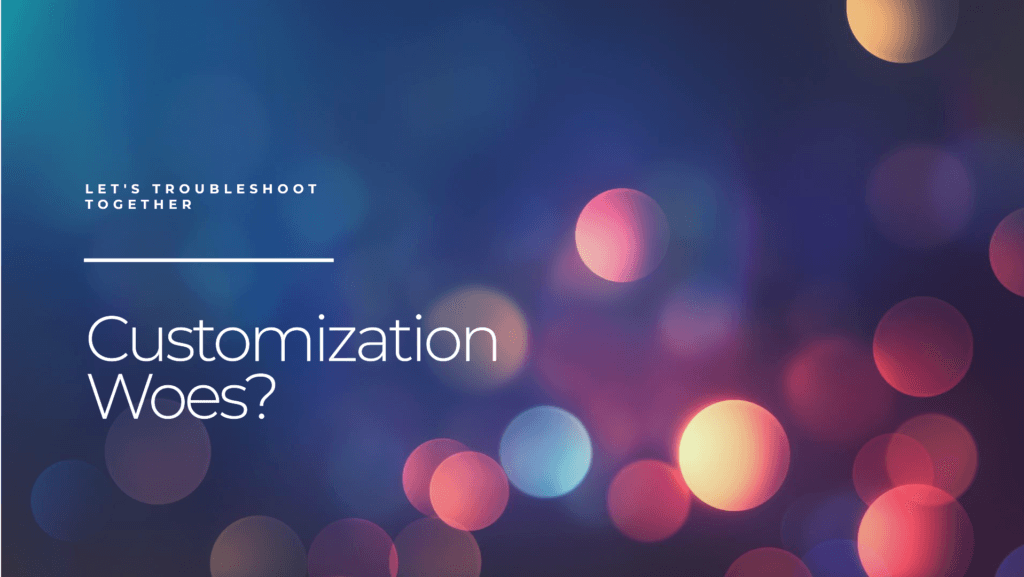
Resolving Common Issues When Customizing
- Wallpaper Not Applying Properly:
- If you find that your wallpaper isn’t displaying correctly, it could be due to the image resolution or aspect ratio. Make sure the wallpaper you’re using fits the screen’s size. You can also try restarting your phone or selecting a different wallpaper from the settings.
- Widgets Not Showing Up or Responding:
- Sometimes, widgets may not display as intended, or they might be unresponsive. This could happen if the iOS update hasn’t fully completed or if there’s a glitch in the app associated with the widget. Try restarting your iPhone and ensuring that the app providing the widget is up-to-date.
- Animoji or Memoji Not Working:
- If Memojis or Animojis aren’t functioning correctly, it could be due to a camera issue or a software bug. Make sure your camera lenses are clean and free of obstructions. If the problem persists, try restarting the device or updating to the latest version of iOS.
- Icons Not Changing After Customization:
- After customizing app icons, you might notice that they aren’t changing or showing the correct design. This can happen if you use third-party apps to change icons, as some apps may not be compatible with the latest iOS version. Ensure you’re using reliable apps for customization, and check for updates.
- Control Center Customization Not Working:
- If you’re having trouble adding or removing controls in the Control Center, check if your iPhone is running the latest version of iOS. You can also reset the settings for the Control Center by going to Settings > Control Center, then add or remove items as needed.
When to Contact Apple Support
If you’ve tried troubleshooting the issues listed above and still encounter problems, it might be time to contact Apple Support. Apple’s technical team can help resolve software bugs or issues that might be beyond simple troubleshooting. Here’s when to contact them:
- If you experience persistent software issues that don’t resolve after a restart or update.
- If your iPhone 12’s performance seems to be affected by customization (e.g., slower speeds or crashes).
- If there’s a hardware issue impacting customization (e.g., the camera doesn’t function properly for Memoji creation).
You can reach Apple Support through their website, Apple Store, or by calling their customer service.
Conclusion
The conclusion is the final section where you wrap up the main points of your article and provide a closing thought or call to action. In this case, the focus is on summarizing the customization options for the iPhone 12 and encouraging readers to personalize their devices to match their preferences. Here’s how to frame the conclusion effectively:
- Recap of iPhone 12’s Customization Capabilities: Revisit the main areas you’ve covered throughout the article. Remind your readers of the various customization options available for the iPhone 12, such as customizing the home screen, notifications, sounds, privacy settings, and using Siri. This will reinforce the idea that the iPhone 12 offers a wide range of features that can be tailored to individual needs.
- Encouragement to Make Your Device Uniquely Yours: End with an encouraging note, motivating readers to embrace the customization options available. Highlight the fact that personalizing their iPhone not only enhances usability but also makes the device feel more like a personal extension of themselves. Suggest that the possibilities are endless, and with a little effort, their iPhone can truly reflect their personality.
- Call to Action: You might also want to include a light call to action, like “Explore your device’s potential today!” or “Start customizing now and make your iPhone 12 truly yours.” This encourages the reader to take the first step toward personalizing their device.
FAQs
How do I reset my customizations if I want to start fresh?
Sometimes, users may want to revert their device to its original settings or start over with customization. You can explain how to reset the iPhone 12’s settings through the “Reset” option in the Settings menu. Specifically, they can choose “Reset All Settings,” which will reset all personalized settings (like Wi-Fi passwords and wallpaper) but not erase data or apps. It’s a simple process to restore default configurations if desired.
What are the best third-party apps for themes and widgets?
Many users love enhancing their iPhone’s look with third-party themes and widgets. Recommend a few popular apps that offer customizable themes, icons, and widgets. Some examples might include “Widgetsmith” for widgets, “Canva” for custom wallpapers, and “Aesthetic Kit” for unique app icons. Explain that these apps offer both free and paid features, and guide the reader on how to use them for creating a personalized iPhone experience.
Can I customize multiple Focus modes for different activities?
Yes, iPhone 12 allows users to set up different Focus modes for different situations (e.g., work, personal time, driving, etc.). Explain that Focus modes help filter notifications based on activities. For instance, during work hours, a user can mute notifications from social apps and only receive messages from important contacts. This personalization helps users maintain focus and reduce distractions. Users can set up multiple Focus modes, each tailored to their specific activities and preferences.
How do I save battery without sacrificing customization?
One of the common concerns when customizing devices is the impact on battery life. Here, provide tips on how users can maintain good battery health without compromising on personalization. For example, you can recommend using static wallpapers instead of dynamic ones, reducing screen brightness, enabling Low Power Mode, and turning off unnecessary background app refresh. Customizing the device doesn’t have to drain the battery if users are mindful of power-hungry features.
Is customizing my iPhone 12 safe for its performance?
Reassure readers that, generally, customizing the iPhone 12 does not affect its performance negatively. Personalizing features such as changing wallpapers, adding widgets, or adjusting sounds won’t slow down the device. However, it’s important to avoid installing too many third-party apps or using excessive widgets, as this may slightly impact system resources. Mention that it’s always a good idea to keep the iPhone updated to ensure smooth performance and security.



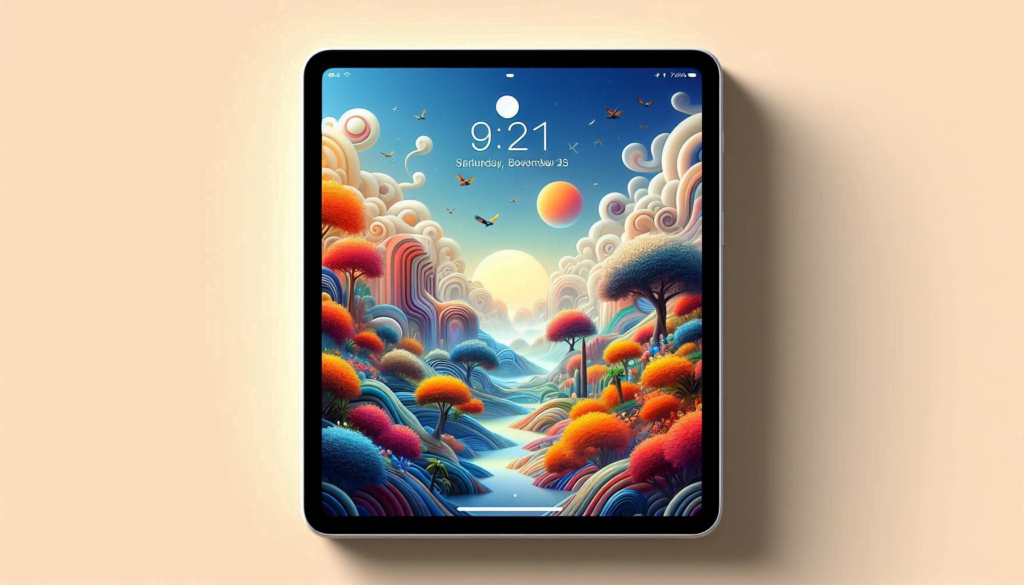
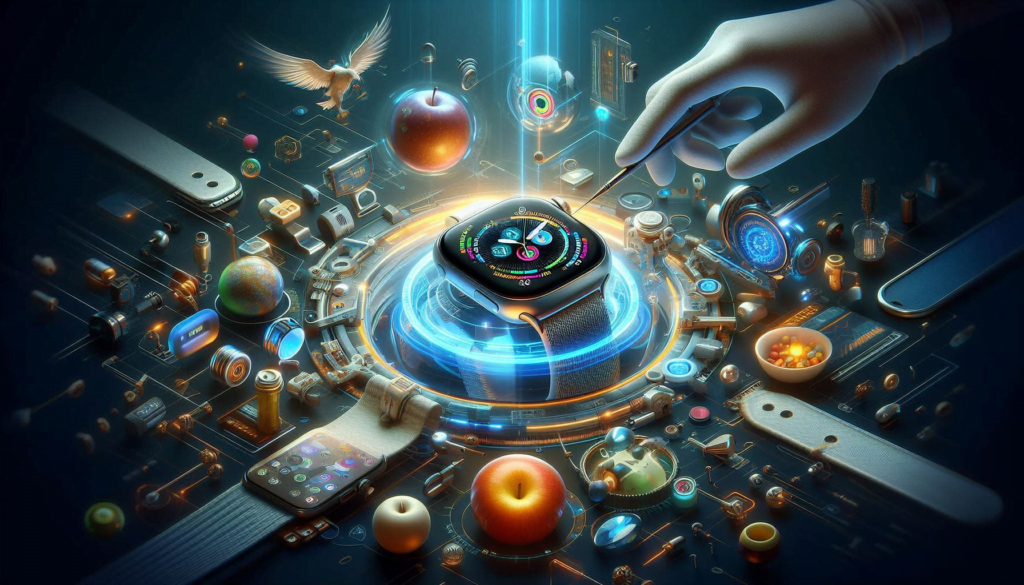


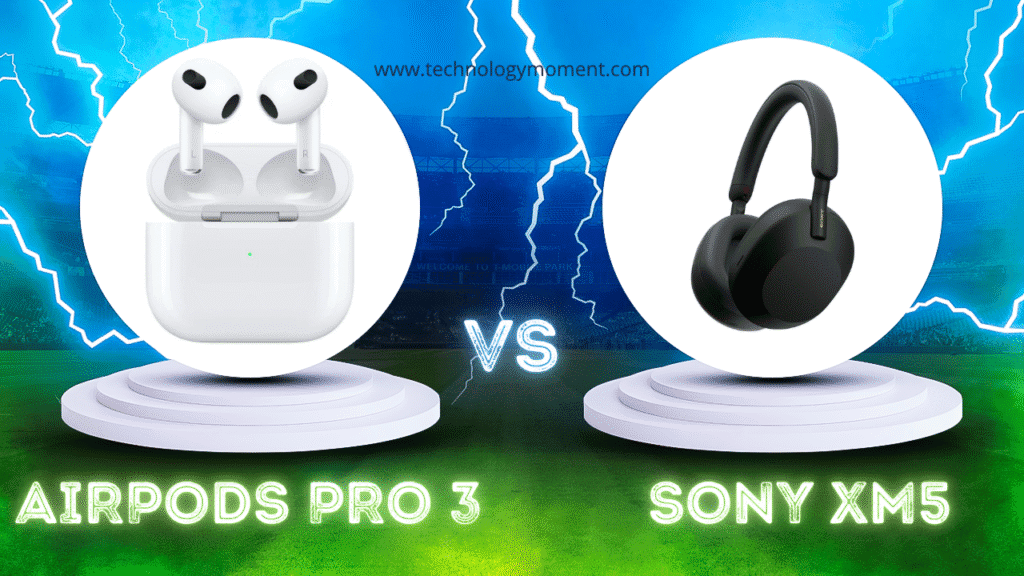
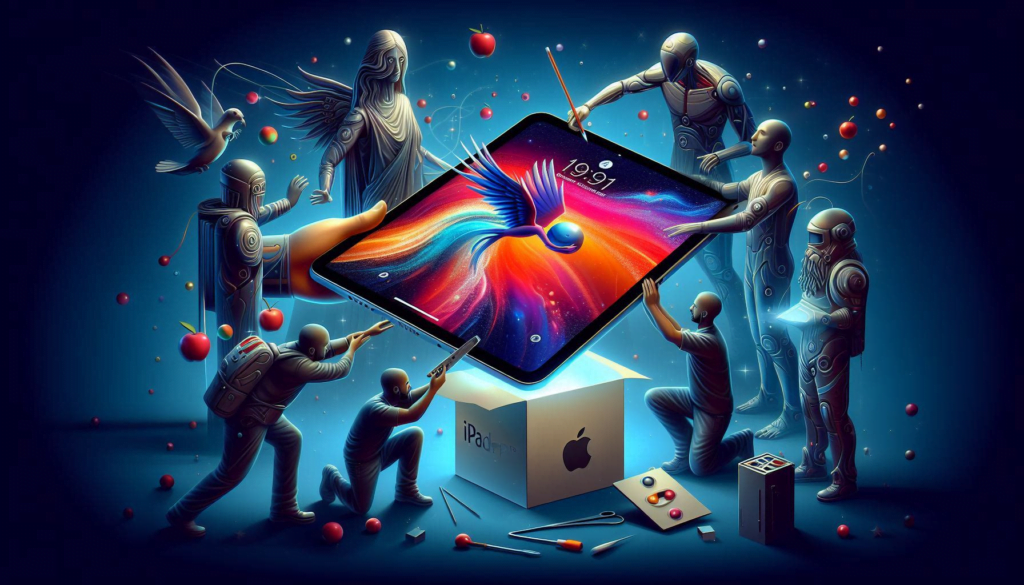
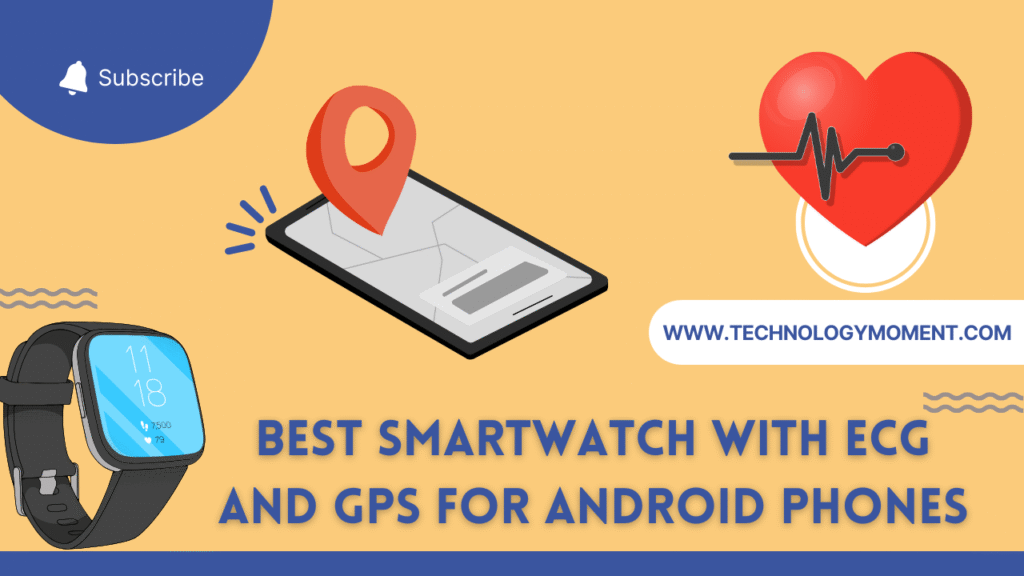

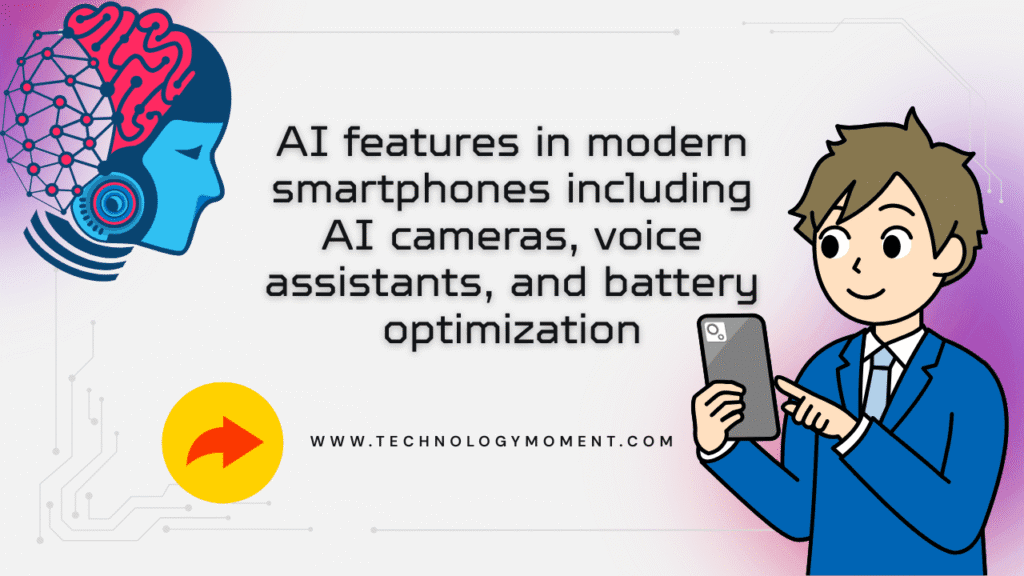
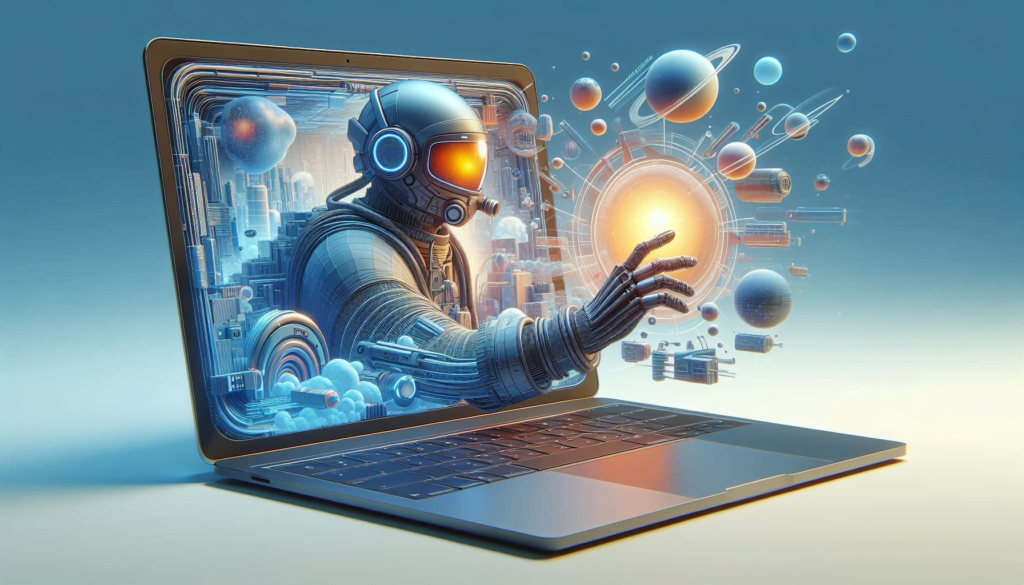

This guide is incredibly helpful! I love how detailed the steps are for customizing my iPhone 12. It made the process so much easier for someone like me who isn’t very tech-savvy. Great job!
Fantastic guide! The tips on personalizing settings really enhanced my iPhone experience. However, it would be great to see a section on customizing app icons too. Keep up the great work!
Thanks for this comprehensive guide! It’s perfect for anyone looking to make their iPhone 12 truly theirs. Just a suggestion: maybe include some troubleshooting tips for common customization issues?
Thanks for this awesome guide! Customizing my iPhone 12 has been on my to-do list forever, and your tips are just what I needed to get started. Can’t wait to see how it turns out!
Such a great post! I love all the customization options you’ve laid out for the iPhone 12. It’s like giving my phone a whole new personality! Thanks for making it so simple and fun!